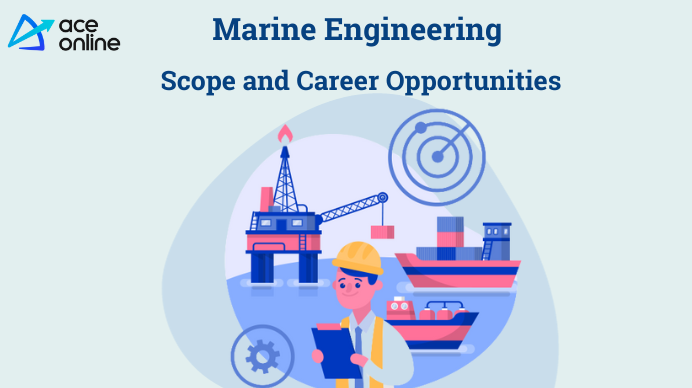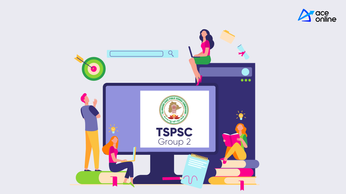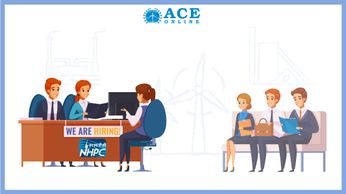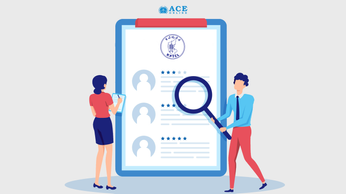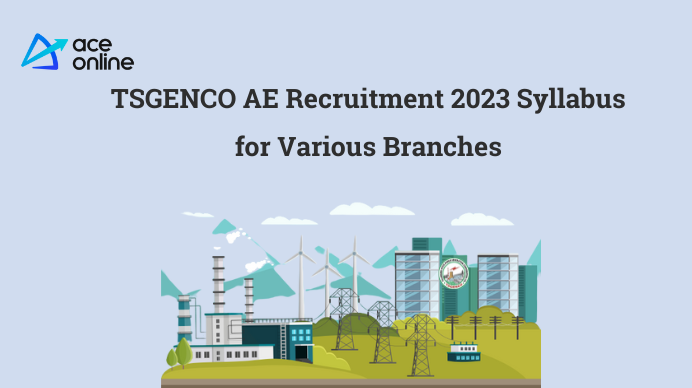
TSGENCO AE Recruitment 2023 Syllabus for Various Branches
Are you aspiring to join Telangana State Power Generation Corporation Limited (TSGENCO) as an Assistant Engineer (AE) in 2023? To get through this understanding the syllabus is key
Are you aspiring to join Telangana State Power Generation Corporation Limited (TSGENCO) as an Assistant Engineer (AE) in 2023? To get through this understanding the syllabus is key. To help you prepare effectively, we are explaining the TSGENCO AE Recruitment 2023 Syllabus for Various Branches as your roadmap, guiding you through the topics and subjects crucial for the examination. In this simplified guide, we will break down the syllabus into easy-to-understand sections, ensuring that you can confidently tackle the exam. Let’s explore the essential topics for each branch, making your preparation journey smoother and more focused.
TSGENCO AE Recruitment 2023 Electrical Engineering Syllabus
Subject | Syllabus |
Section –A Total 80 Marks | 1. Electrical Materials Electrical Engineering Materials, crystal structures, and defects, ceramic materials, insulating materials, magnetic materials– basics, properties, and applications; ferrites, ferromagnetic materials, and components; basics of solid state physics, conductors; Photo‐conductivity; Basics of Nano materials and Superconductors. 2. Electric Circuits and Fields: Circuit elements, network graph, KCL, KVL, Node and Mesh analysis, ideal current and voltage sources, Thevenin’s, Norton’s, Superposition and Maximum Power Transfer theorems, transient response of DC and AC networks, Sinusoidal steady state analysis, basic filter concepts, two‐port networks, three-phase circuits, resonance, Magnetically coupled circuits, Gauss Theorem, electric field, and potential due to point, line, plane, and spherical charge distributions, Ampere’s and Biot‐ Savart’s laws; inductance, dielectrics, capacitance; Maxwell’s equations. 3. Electrical and Electronics Measurements Principles of measurement, accuracy, precision, and standards; Bridges and potentiometers; moving coil, moving iron, dynamometer, and induction type instruments, measurement of voltage, current, power, energy, and power factor, instrument transformers, digital voltmeters and multi‐meters, phase, time, and frequency measurement, Q‐meters, oscilloscopes, potentiometric recorders, error analysis, Basics of sensors, Transducers, basics of data acquisition systems. 4. Analog and Digital Electronics Operational amplifiers – characteristics and applications, combinational and sequential logic circuits, multiplexers, multi-vibrators, sample and hold circuits, A/D and D/A converters, basics of filter circuits and applications, simple active filters; Microprocessor basics‐ interfaces and applications, basics of linear integrated circuits; Analog communication basics, Modulation and demodulation, noise and bandwidth, transmitters and receivers, signal-to-noise ratio, digital communication basics, sampling, quantizing, coding, frequency and time domain multiplexing, and power line carrier communication systems. 5. Systems and Signal Processing Representation of continuous and discrete‐time signals, shifting and scaling operations, linear, time‐invariant, and causal systems, Fourier series representation of continuous periodic signals, sampling theorem, Fourier and Laplace transforms, Z transforms, Discrete Fourier transform, FFT, linear convolution, discrete cosine transform, FIR filter, IIR filter, and bilinear transformation. 6. Control Systems Modeling of physical systems, Principles of feedback, transfer function, block diagrams, signal flow graphs, steady‐state errors, transforms, and their applications; Routh‐Hurwitz criterion, Nyquist techniques, Bode plots, root loci, lag, lead and lead‐lag compensation, stability analysis, transient and frequency response analysis, state space model, state transition matrix, controllability and observability, linear state variable feedback, PID and industrial controllers. 7. Electrical Machines Single-phase transformers, three-phase transformers ‐ connections, parallel operation, auto‐transformer, energy conversion principles, DC machine ‐ types, windings, generator characteristics, armature reaction, and commutation, methods of excitation, starting and speed control of motors, Induction motors ‐ principles, types, performance characteristics, starting and speed control, Synchronous machines ‐ performance, regulation, parallel operation of generators, motor starting, characteristics and applications, servo and stepper motors. 8. Power Systems AC and DC transmission concepts, transmission line models and performance, cable performance, insulation, corona and radio interference, power factor correction, Per unit quantities, symmetrical components, analysis of symmetrical and unsymmetrical faults, Switchgear Protection: Principles of overcurrent, differential and distance protections, various types of circuit breakers and their functions, Relays, Protection for Generator, Transformers, feeder and Bus bars, Grounding, Protection against Over Voltages. functions of Radial and ring‐main distribution systems, the concept of power system stability, swing curves, and equal area criterion. Power System Operation and Control, Matrix representation of power systems, load flow analysis, voltage control, economic operation, HVDC transmission and FACTS concepts, Concepts of power system dynamics, and smart grid concepts. Batteries and battery chargers. 09. Power Plant Engineering Basic power generation concepts, Steam Power Plants with Subcritical, critical, and supercritical technology, Combustion Process, Gas Turbine Plant, Direct Energy Conservation, Hydro Electric Power Plant, nuclear and power from Non-conventional sources, Introduction to Quality Management and Environmental protection. Power plant economics cost, Investment of fixed charges, operating cost, arrangements for power distribution, load curves, connected load, maximum demand, demand factor, average load, load factor, diversity factor, Environmental considerations- Effluents from Power Plants and impact of environment, Pollution and pollution standards-Methods of pollution control, Power plant components their theory and design, types and applications. 10. Power Electronics and Drives: Basics of Semiconductor diodes and transistors and characteristics, Junction and field effect transistors (BJT, FET, and MOSFETS), Triacs, GTOs and IGBTs ‐ static characteristics and principles of operation, triggering circuits, phase control rectifiers, bridge converters ‐ fully controlled and half controlled, principles of choppers and inverters, basic concepts of adjustable speed DC and AC drives, DC‐DC switched mode converters, DC‐AC switched-mode converters, resonant converters, high-frequency inductors and transformers, and power supplies. 11. Thermodynamics: Thermodynamic systems and processes; properties of pure substance; Zeroth, First and Second Laws of Thermodynamics; Entropy, Irreversibility, and availability; analysis of thermodynamic cycles related to energy conversion: Rankine, modified Rankine, Otto, Diesel, and Dual Cycles; ideal and real gases; compressibility factor; Gas mixtures. 12. Heat-Transfer: Modes of heat transfer; one-dimensional heat conduction, resistance concept, and electrical analogy, heat transfer through fins; unsteady heat conduction, lumped parameter system, Heisler's charts; thermal boundary layer, dimensionless parameters in free and forced convective heat transfer, heat transfer correlations for flow over flat plates and through pipes, the effect of turbulence; heat exchanger performance, LMTD, and NTU methods; radiative heat transfer, Stefan- Boltzmann law, Wien's displacement law, black and grey surfaces, view factors, and radiation network analysis. |
Section –B Total 20 Marks General Awareness and Numerical Ability: | i) Analytical & Numerical Ability ii) General Awareness iii) English iv) Telangana Culture, Movement. Post-formation development of Telangana State. v) Basic knowledge of computers for handling office work such as MS Office etc |
TSGENCO AE Recruitment 2023 Electronics Engineering Syllabus
Subject | Syllabus |
Section –A Total 80 Marks Electronics Engineering | 1. Networks, Signals, and Systems: Circuit analysis: KCL, KVL, Node and mesh analysis, superposition, Thevenin's theorem, Norton’s theorem, reciprocity. Sinusoidal steady state analysis: phasors, complex power, maximum power transfer. Time and frequency domain analysis of linear circuits: RL, RC, and RLC circuits, solution of network equations using Laplace transform. Linear 2-port network parameters, wye-delta transformation. Continuous-time signals: Fourier series and Fourier transform, sampling theorem and applications. Discrete-time signals: DTFT, DFT, z-transform, discrete-time processing of continuous-time signals. LTI systems: definition and properties, causality, stability, impulse response, convolution, poles and zeroes, frequency response, group delay, phase delay. 2. Electronic Devices: concentration, direct and indirect band-gap semiconductors. Carrier transport: diffusion current, drift current, mobility and resistivity, generation and recombination of carriers, Poisson and continuity equations. P-N junction, Zener diode, BJT, MOS capacitor, MOSFET, LED, solar cell, Laser, photodiode, Photoresistor and their characteristics, Basics of Fiber Optics 3. Analog Circuits: Diode circuits: clipping, clamping, and rectifiers. BJT and MOSFET amplifiers: biasing, accoupling, small signal analysis, frequency response. Current mirrors and differential amplifiers. Op-amp circuits: Amplifiers, summers, differentiators, integrators, active filters, Schmitt triggers, and oscillators. 4. Digital Circuits: Number representations: binary, integer, and floating-point numbers. Combinatorial circuits: Boolean algebra, minimization of functions using Boolean identities and Karnaughmap, logic gates, and their static CMOS implementations, arithmetic circuits, code converters, multiplexers, and decoders. Sequential circuits: latches and flip-flops, counters, shift registers, finite state machines, propagation delay, setup and hold time, critical path delay. Data converters: sample and hold circuits, ADCs, and DACs. Semiconductor memories: ROM, SRAM, DRAM. Computer organization: Machine instructions and addressing modes, ALU, data path and control unit, instruction pipelining. Microprocessor: 8086/8088 and Microcontroller: 8051. 5. Control Sytems: Basic control system components; Feedback principle; Transfer function; Block diagram representation; Signal flow graph; Transient and steady-state analysis of LTI systems; Frequency response; Routh-Hurwitz and Nyquist stability criteria; Bode and root-locus plots; Lag, lead and lag-lead compensation; State variable model and solution of state equation of LTI systems. 6. Communications: Random processes: autocorrelation and power spectral density, properties of white noise, filtering of random signals through LTI systems. Analog communications: Amplitude modulation and demodulation, angle modulation and demodulation, spectra of AM and FM, superheterodyne receivers. Information theory: Entropy, mutual information, and channel capacity theorem. Digital communications: PCM, DPCM, digital modulation schemes (ASK, PSK, FSK, QAM), bandwidth, inter-symbol interference, MAP, ML detection, matched filter receiver, SNR, and BER. Fundamentals of error correction, Hamming codes, CRC. 7. Electromagnetics: Maxwell's equations: differential and integral forms and their interpretation, boundary conditions, wave equation, Poynting vector. Plane waves and properties: reflection and refraction, polarization, phase and group velocity, propagation through various media, skin depth. Transmission lines: equations, characteristic impedance, impedance matching, impedance transformation, S-parameters, Smith chart. Rectangular and circular waveguides, light propagation in optical fibers, dipole and monopole antennas, and linear antenna arrays. 8. Basic Electrical Engineering: Electro‐magnetism, Faraday’s & Lenz’s laws, induced EMF and its uses; Single‐phase AC circuits; Transformers, efficiency; Basics‐DC machines, induction machines, and synchronous machines, Basics of batteries and their uses. 9. Materials Science: Electrical Engineering materials; Crystal structure & defects; Ceramic materials‐structures, composites, processing and uses; Insulating laminates for electronics, structures, properties and uses; Magnetic materials, basics, classification, ferrites, ferro/para‐magnetic materials and components; Nano materials‐basics, preparation, purification, sintering, nanoparticles and uses; Nano‐optical/magnetic/electronic materials and uses; Superconductivity, uses. 10. Power Plant Engineering: Basic power generation concepts, Steam Power Plants with Sub- critical, critical, and supercritical technology, Combustion Process, Gas Turbine Plant, Direct Energy Conservation, Hydro Electric Power Plant, nuclear and power from Non-conventional sources, Power plant economics cost, Investment of fixed charges, operating cost, arrangements for power distribution, load curves, connected load, maximum demand, demand factor, average load, load factor, diversity factor, Environmental considerations- Effluents from Power Plants and impact of environment, Pollution and pollution standards-Methods of pollution control, Power plant components-their theory and design, types, and applications. 11. Electrical & Electronic Measurements: Static and dynamic characteristics of Measurement Systems. Error and uncertainty analysis. Statistical analysis of data and curve fitting. Bridges and potentiometers, measurement of R, L, and C. Measurements of voltage, current, power, power factor, and energy. A.C & D.C current probes. Extension of instrument ranges. Q-meter and waveform analyzer. Digital voltmeter and multi-meter. Time, phase, and frequency measurements. Cathode Ray Oscilloscope. Serial and parallel communication. Shielding and grounding. Transducers and their applications to the measurement of non-electrical quantities like temperature, pressure, strain, displacement liquid level. Measurement of pH, conductivity, viscosity, and humidity |
Section –B Total 20 Marks General Awareness and Numerical Ability: | i) Analytical & Numerical Ability ii) General Awareness iii) English iv) Telangana Culture, Movement. Post-formation development of Telangana State. v) Basic knowledge of computers for handling office work such as MS Office etc |
TSGENCO AE Recruitment 2023 Civil Engineering Syllabus
Subject | Syllabus |
Section –A Total 80 Marks Civil Engineering | 1. Engineering Mechanics System of forces, free-body diagrams, equilibrium equations; Internal forces in structures; Frictions and its applications; Centre of mass; Free Vibrations of undamped SDOF system 2. Solid Mechanics Bending moment and shear force in statically determinate beams; Simple stress and strain relationships; Simple bending theory, flexural and shear stresses, shear center; Uniform torsion, Transformation of stress; buckling of column, combined and direct bending stresses. 3. Structural Analysis Statically determinate and indeterminate structures by force/ energy methods; Method of superposition; Analysis of trusses, arches, beams, cables, and frames; Displacement methods: Slope deflection and moment distribution methods; Influence lines; Stiffness and flexibility methods of structural analysis. 4. Building Materials & Construction Management Stone, Lime, Glass, Plastics, Steel, FRP, Ceramics, Aluminum, Fly Ash, Basic Admixtures, Timber, Bricks, and Aggregates: Classification, properties, and selection criteria. Cement: Types, Composition, Properties, Uses, Specifications, and various Tests; Lime & Cement Mortars and Concrete: Properties and various Tests; Design of Concrete Mixes: Proportioning of aggregates and methods of mix design. Construction Management: Types of construction projects; Project planning and network analysis - PERT and CPM; Cost estimation. 5. Fluid Mechanics, Open Channel Flow, Pipe Flow: Fluid properties; Dimensional Analysis and Modeling; Fluid dynamics including flow kinematics and measurements, CFD Analysis, orifices and mouthpieces, notches, and weirs, the impact of jets; Flow net; Viscosity, Boundary layer, and control, Drag, Lift, Principles in open channel flow, Flow Patterns, Flow controls. Hydraulic jump; Surges; Pipe networks. 6. Hydraulic Machines and Hydropower: Various pumps, Air vessels, Hydraulic turbines – types, classifications & performance parameters; Power house – classification and layout, storage, bondage, control of supply 7. Hydrology and Water Resources Engineering: Hydrological cycle, Ground water hydrology, Well hydrology, and related data analysis; Streams and their gauging; River morphology; Flood, drought and their management; Capacity of Reservoirs. Water Resources Engineering: Multipurpose uses of Water, River basins and their potential; Irrigation systems, water demand assessment; Resources ‐ storages and their yields; Water logging, canal and drainage design, Gravity dams, falls, weirs, Energy dissipaters, barrage Distribution works, Cross drainage works and head‐works and their design; Concepts in canal design, construction & maintenance; River training, measurement and analysis of rainfall. 8. Water Supply Engineering Sources, Estimation, quality standards, and testing of water and their treatment; Rural, Institutional, and industrial water supply; Physical, chemical, and biological characteristics and sources of water, Pollutants in water and its effects, Estimation of water demand; Drinking water Standards, Water Treatment Plants, Water distribution networks. 9. Waste Water Engineering Planning & design of domestic waste water, sewage collection, and disposal; and Plumbing Systems. Components and layout of sewerage system; Planning & design of Domestic Wastewater disposal system; Sludge management including treatment, disposal, and re‐use of treated effluents; Industrial waste waters and Effluent Treatment Plants including institutional and industrial sewage management. 10. Solid Waste Management Sources & classification of solid wastes along with planning & design of its management system; Disposal system, Beneficial aspects of wastes, and Utilization by Civil Engineers. 11. Air Pollution Types of pollutants, their sources, and impacts, air pollution control, air quality standards, Air Quality Index, and limits. 12. Geo‐technical Engineering Soil exploration ‐ planning & methods, Properties of soil, classification, various tests, and inter-relationships; Permeability, Capillarity & Seepage, Compressibility, consolidation, and Shearing resistance, Earth pressure theories and stress distribution in soil; Properties and uses of geo‐synthetics. 13. Foundation Engineering Types of foundations & selection criteria, bearing capacity, settlement analysis, design and testing of shallow & deep foundations; Slope stability analysis, Earthen embankments, Dams, and Earth retaining structures: types, analysis and design, Principles of ground modifications. 14. Surveying Classification of surveys, various methodologies, instruments & analysis of measurement of distances, elevation, and directions; Field astronomy, Global Positioning System; Map preparation; Photogrammetry; Remote sensing concepts; Survey Layout for culverts, canals, bridges, road/railway alignment, and buildings, Setting out of Curves 15. Transportation Engineering Highways ‐ Planning & construction methodology, Alignment, and geometric design; Traffic Surveys and Controls; Principles of Flexible and Rigid pavements design. Tunneling ‐ Alignment, methods of construction, disposal of muck, drainage, lighting, and ventilation. Railway Systems – Terminology, Planning, designs, and maintenance practices; track modernization. Harbors – Terminology, layouts, and planning. 16. Design of Steel Structures Principles of Working Stress methods, Design of tension and compression members, Design of beams and beam column connections, built‐up sections, Girders, Industrial roofs, Riveted and welded joints, Principles of Ultimate load design. 17. Design of Concrete and Masonry structures Limit state design for bending, shear, axial compression, and combined forces; Design of beams, Slabs, Lintels, Foundations, Retaining walls, Tanks, and Staircases; Principles of pre‐stressed concrete design including materials and methods; Earthquake resistant design of structures; Design of Masonry Structure 18. Power Plant Engineering Basic power generation concepts, Steam Power Plants with Sub- critical, critical, and supercritical technology, Combustion Process, Gas Turbine Plant, Direct Energy Conservation, Hydro Electric Power Plant, nuclear and power from Non-conventional sources, Power plant economics cost, Investment of fixed charges, operating cost, arrangements for power distribution, load curves, connected load, maximum demand, demand factor, average load, load factor, diversity factor, Environmental considerations- Effluents from Power Plants and impact of environment, Pollution and pollution standards-Methods of pollution control , Power plant components their theory and design, types and applications, Basics of batteries and their uses. |
TSGENCO AE Recruitment 2023 Mechanical Engineering Syllabus
Subject | Syllabus |
Section –A Total 80 Marks Mechanical Engineering | 1. Engineering Mechanics Free-body diagrams and equilibrium; friction and its applications including rolling friction, belt-pulley, brakes, clutches, screw jack, wedge, vehicles, etc.; trusses and frames; virtual work; kinematics and dynamics of rigid bodies in plane motion; impulse and momentum (linear and angular) and energy formulations; Lagrange’s equation. 2. Mechanics of Materials Stress and strain, elastic constants, Poisson's ratio; Mohr’s circle for plane stress and plane strain; thin cylinders; shear force and bending moment diagrams; bending and shear stresses; the concept of shear center; deflection of beams; torsion of circular shafts; Euler’s theory of columns; energy methods; thermal stresses; strain gauges and rosettes; testing of materials with the universal testing machine; testing of hardness and impact strength. 3. Theory of Machines Displacement, velocity, and acceleration analysis of plane mechanisms; dynamic analysis of linkages; cams; gears and gear trains; flywheels and governors; balancing of reciprocating and rotating masses; gyroscope. 4. Vibrations Free and forced vibration of single degree of freedom systems, the effect of damping; vibration isolation; resonance; critical speeds of shafts. |
ACE Online Newsletter
Join the newsletter to receive the latest updates in your inbox.

